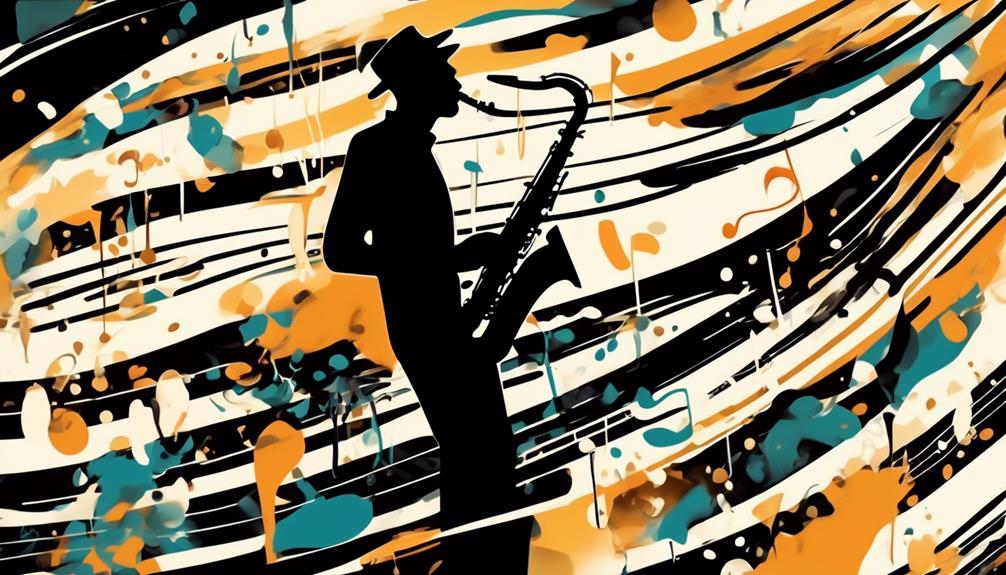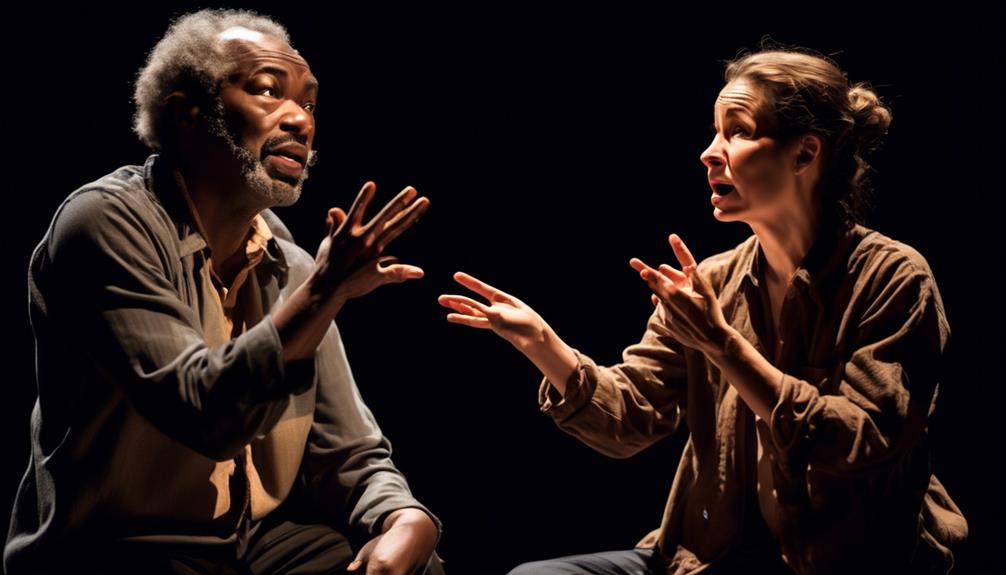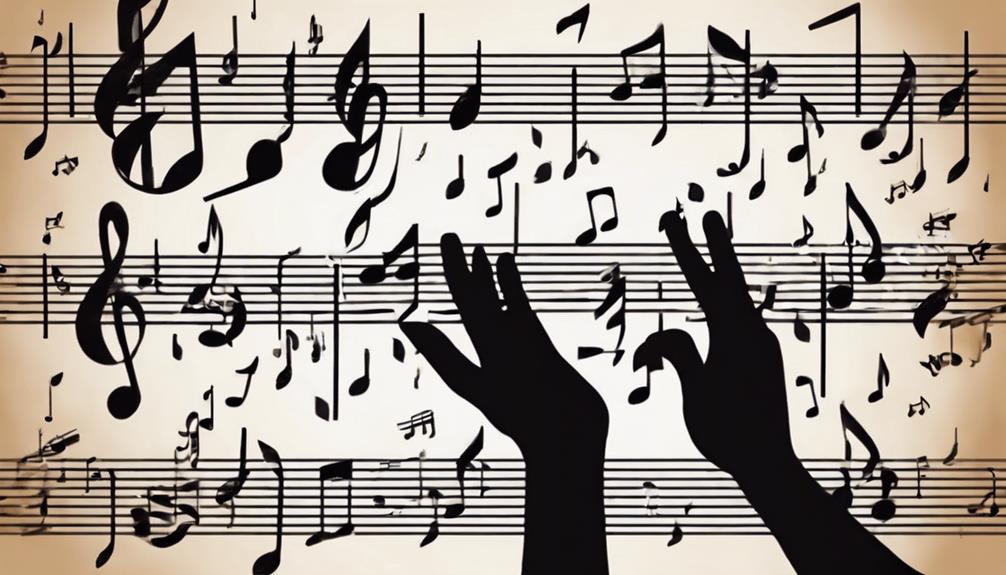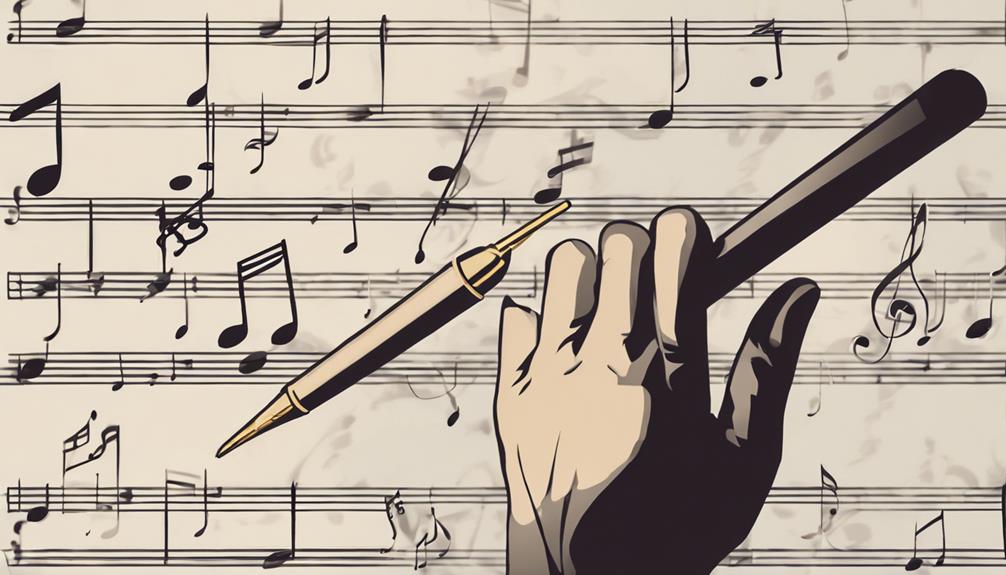No products in the cart.
As you embark on your musical journey, certain ‘opportunities for improvement’ present themselves, particularly in the realm of improvisation. You’ve likely heard that mastering the art of improv is a cornerstone for any serious musician, and it’s true—there’s a set of foundational skills that can significantly enhance your ability to spontaneously create music.
You’re already familiar with the basics: scales, chords, and perhaps some rhythmic patterns. However, there’s a deeper layer of knowledge to uncover. From understanding the significance of scales and modes, to dissecting chords and progressions, and even employing dynamics and expression, each essential skill builds upon the last, culminating in a comprehensive toolkit that can transform your impromptu sessions.
These are not just tips or tricks; they’re the building blocks of a language you’ll speak fluently on your instrument. And as you ponder the significance of each element, you’ll find yourself poised at the brink of a revelation, eager to explore how these principles interweave to create the tapestry of improvisation.
Key Takeaways
- Scales and modes are fundamental for creating melodies and harmonies in music.
- Understanding key signatures and their relationship with chords is crucial for improvisation.
- Mastering chord structures and progression patterns is essential for dynamic and engaging solos.
- Rhythmic fundamentals, dynamics, and melodic structures play a crucial role in real-time improvisation.
Understanding Scales and Modes
To elevate your improvisation game, it’s crucial to grasp how scales and modes create the backbone for melodies and harmonies in music. Scales aren’t just sequences of notes; they’re your palette, offering endless shades for crafting solos and creative expressions.
When you dive into modes, you’re uncovering different emotional landscapes—each with its own pattern and tonal character. Think of the major scale as your home base, a familiar ground from which you can venture into the exotic territories of Dorian’s mellow twists, Mixolydian’s bluesy edges, or Phrygian’s mysterious depths.
Exploring improvisation techniques begins with internalizing these scales and modes. They aren’t just theory; they’re tools that enable you to navigate through musical ideas with intention and flair. As you practice, you’ll find that analyzing modal interchange isn’t just an academic exercise; it’s a way to add surprising turns and innovative colors to your playing.
Mastering this knowledge won’t only bolster your confidence but will also unlock your creative potential, allowing your improvisations to resonate with depth and originality. Keep pushing the boundaries, and you’ll discover the limitless possibilities that scales and modes can offer your music.
Mastering Chords and Progressions
As you begin to grasp chord structures, you’ll unlock the ability to craft compelling improvisations that resonate with listeners.
Familiarize yourself with navigating key signatures, a skill that’ll let you transpose with ease and confidence during live performances.
To truly excel, focus on mastering progression patterns, as they’re the backbone of dynamic and engaging solos.
Understanding Chord Structures
Dive into the world of music by mastering chord structures, the essential building blocks that create the rich tapestry of harmony within your compositions. As you explore chord extensions and alterations, you’ll find a new spectrum of sounds at your fingertips. Voice leading and chord voicings are vital for smooth transitions and a polished sound.
Consider these elements to enhance your chordal understanding:
- Stacking thirds: Understand how to build chords from the ground up.
- Chord types: Each type (major, minor, diminished, augmented) colors your music differently.
- Progressions: Learn to craft progressions that evoke the right emotional response.
- Inversions and voicings: Achieve variety and sophistication in your harmonic choices.
Embrace these concepts, and you’ll be on your way to innovative improvisations.
Mastering key signatures is essential for unlocking the full potential of chord progressions and elevating your improvisational prowess. As you delve into the world of improvisation, understanding key signatures and their relationship with chords is crucial. It’s not just about playing the right notes; it’s about weaving a musical tapestry that resonates with innovation.
Learn to identify and navigate various key signatures, and you’ll find yourself transitioning between them with ease. This skill is pivotal when applying key changes and modulation techniques, pivotal elements for refreshing your sound.
Through practice, you’ll master the art of shifting seamlessly from one key to another, offering a rich palette to color your improvisations. Embrace this knowledge, and watch as your compositions flourish with newfound creativity.
Progression Patterns Mastery
Unlock the full potential of your musical expression by learning the ins and outs of chord progressions, the backbone of dynamic and engaging improvisation. You’ll find that mastering these patterns isn’t just about playing chords in sequence; it’s about understanding how each chord moves to the next to create a narrative in your music.
- Master common progressions like the I-IV-V and ii-V-I to provide a solid foundation.
- Experiment with substituting chords to add color and complexity to your soundscapes.
- Use different voicings and inversions to maintain listener interest and create tension.
- Develop fluency in navigating through progressions in various keys to enhance your versatility.
Rhythmic Fundamentals
To sharpen your improvisational edge, it’s crucial to first get a solid handle on the rhythmic fundamentals that act as the heartbeat of music. Understanding note values and how they come together in time signatures forms the canvas on which you’ll paint your rhythmic patterns. You’re not just playing notes; you’re crafting moments in time.
Dive into the world of polyrhythms and syncopation techniques to push the envelope of conventional rhythms. Polyrhythms layer multiple time signatures, creating a complex weave of beats, while syncopation emphasizes the off-beats, adding surprise and excitement to your music.
Here’s a table to help you visualize these concepts:
| Rhythmic Element | Description | Importance in Improv |
|---|---|---|
| Note Values | Determine duration of sounds (e.g., whole, half, quarter notes) | Foundation for building patterns |
| Time Signatures | Organize beats per measure (e.g., 4/4, 3/4) | Establish rhythm structure |
| Basic Patterns | Steady pulse and simple repeating patterns | Starting point for variation |
| Polyrhythms & Syncopation | Multiple time signatures; off-beat emphasis | Adds complexity and surprise |
Embrace these elements as your toolkit for innovation. As you master these basics, you’ll find yourself improvising with greater confidence and creativity. Let the rhythm guide you, but don’t be afraid to explore new territories. Your musical journey is just beginning.
Exploring Melodic Structures

You’ll find that a strong grasp of scale degrees is crucial as you craft your melodic lines.
By incorporating motivic elements, you create a signature sound that can evolve throughout your improvisations.
Let’s focus on these building blocks to enhance the expressiveness and uniqueness of your musical voice.
Understanding Scale Degrees
Dive into the world of melodic creation by mastering scale degrees, the building blocks that give structure and emotion to your musical narratives. As you explore tension and resolution, you’ll see how a melody’s journey from one scale degree to another shapes its story. Analyzing melodic contour isn’t just about the highs and lows; it’s about the subtle climbs and falls that convey feeling.
Understand how each degree can set a scene or create a cliffhanger.
Use the leading tone to craft compelling resolutions.
Experiment with modal melodies for unique emotional flavors.
Map out chord tones to ensure your improv dances seamlessly with harmony.
Embrace these concepts to innovate and express your musical vision with precision and passion.
Crafting Motivic Elements
Harness the power of crafting motivic elements to transform simple musical ideas into the backbone of your improvisational journey. As you delve into exploring motif development, remember that a motif’s strength lies in its potential for evolution. By experimenting with rhythmic and intervallic patterns, you’re not just creating memorable melodies; you’re forging a unique musical identity.
Embrace the art of repetition and variation to weave cohesive themes throughout your pieces. Let motifs serve as your improvisational building blocks, adapting and evolving in real-time to captivate your audience. Manipulate these elements with finesse, adding layers of depth and complexity to your melodic improvisations.
Stay innovative, and watch as your motifs become the hallmark of your musical expression.
Dynamics and Expression
To elevate your improv performances, it’s essential to master the art of using dynamics and expression, as they allow you to convey a range of emotions and engage your audience with greater impact. The very essence of improvisation techniques is about conveying emotions effectively and authentically. When you step onto the stage, every nuanced change in your voice or subtle shift in your expression can tell a story of its own.
Remember, your toolkit for dynamic performances includes:
- Varying Volume and Tone: Adjusting your loudness and pitch to match the emotional state of your character.
- Physical Movements: Using the space and your body language to reflect the scene’s intensity.
- Facial Expressions: Communicating non-verbally through your face to show feelings and reactions.
- Vocal Inflections: Bending your voice to add color and texture to your character’s dialogue.
As you continue to practice these elements, stay aware of the scene’s context and be ready to adapt to the unfolding moments. Dynamics and expression aren’t just about being loud or exaggerated; they’re about finding the right balance that resonates with the scene and your scene partners.
Keep pushing the boundaries, and watch as your improv scenes transform into captivating performances.
Harmonic Analysis for Improv


Unlock your musical intuition by mastering harmonic analysis, an essential tool that empowers you to craft compelling improvisations by understanding the underlying chord progressions and tonal landscapes of a piece. This method isn’t just about identifying chords; it’s about seeing the bigger picture, analyzing tonal centers, and recognizing harmonic patterns that provide a roadmap for your spontaneous creations.
As you delve into harmonic analysis for improv, you’ll learn to discern the framework that supports your melodic ideas. You’ll become adept at pinpointing chord changes, which will allow you to make informed decisions on the fly. It’s like having a musical GPS; you’ll always know where you’re and where you can go next.
Phrasing and Articulation Techniques
While you’ve laid the groundwork with harmonic analysis, elevating your improv skills further demands attention to phrasing and articulation techniques that breathe life into each note you play.
Phrasing is the way you shape a sequence of notes to express an idea, much like forming a sentence. It’s about making your improvisation tell a story, where voice leading becomes your narrative thread.
Articulation diversity, the variation in how you strike, sustain, and silence notes, adds the punctuation to your musical language.
To innovate and captivate with your improvisation, consider these strategies:
- Experiment with Dynamics: Play around with volume swells and fades to emphasize emotional content.
- Utilize Silence: Don’t underestimate the power of a well-placed rest to create tension and release.
- Explore Rhythmic Variations: Mix up note lengths and accents to keep your phrases unpredictable and engaging.
- Voice Leading: Smoothly connect chords by considering the melodic flow of your top notes.
Listening and Reacting in Real-Time


As you refine your phrasing and articulation, remember that the heart of improvisation lies in your ability to listen and react in real-time to your scene partner’s cues. Improving timing isn’t just about when to speak; it’s about synchronizing your responses with the subtle rhythms of nonverbal communication as well. Pay close attention to the emotional undertones and physical gestures that accompany the dialogue. These nuances are your guides to authentic reactions.
Stay present and attuned to the ever-shifting dynamics of your scene. This presence allows you to adapt fluidly, ensuring your contributions feel fresh and pertinent. Embrace the ‘Yes, and…’ principle; it’s the cornerstone of collaborative creativity. By accepting and building upon your partner’s ideas, you foster a rich, co-created narrative.
If the scene takes an unforeseen turn, lean into it. Let your listening skills steer you through these moments. Your ability to remain open and responsive to your partner’s input is pivotal in keeping the scene alive and engaging. So listen deeply, react with purpose, and watch as your improv scenes unfold with an innovative and dynamic energy.
Frequently Asked Questions
What Are the Theories of Improvisation?
You’ll encounter theories like ‘Yes, and,’ active listening, and physical storytelling—all serving as creative constraints guiding your spontaneous composition to innovate on stage. Dive in, listen closely, and let’s create something unforgettable together.
What Are the 5 Principles of Improv?
You should embrace five principles of improv: spontaneous creativity, the acceptance principle, active listening, commitment, and collaboration. These guide your inventive journey, enhancing your ability to innovate and engage on stage.
What Are the 5 Elements of Improvisation?
You thrive on creative spontaneity, engaging in unscripted narratives through ‘Yes, and’, active listening, collaboration, and storytelling. Embrace these elements to enhance your improvisational journey and innovate captivating performances.
What Are the 5 Skills of Improvisation?
You’ll excel in improvisation mastering five skills: active listening, spontaneous creativity, collaboration, adaptive thinking, and sheer adaptability. Embrace these to innovate and captivate on stage with confidence and quick wit.
Conclusion
You’ve got the essentials—now make them sing!
Dive into scales and modes; they’re your roadmap.
Master those chord progressions; they’ll be your backbone.
Keep your rhythm tight and play with melodic structures.
Remember, dynamics and expression bring your notes to life.
Analyze harmonies to unlock improv secrets.
Fine-tune your phrasing, articulate with intent, and always listen—your bandmates spark ideas.
Practice relentlessly.
You’re not just playing notes; you’re telling stories.
Go on, let your instrument speak!




